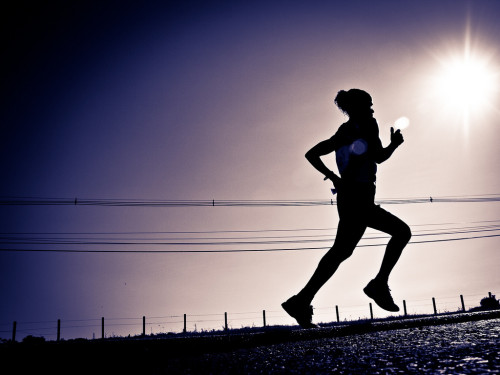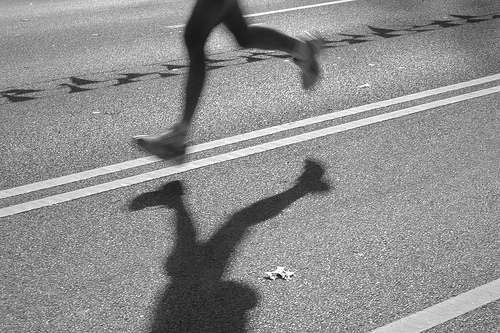Running has become a popular form of fitness activity all across the globe. It’s probably no huge surprise since it’s easy to get started, you don’t need a lot of equipment to keep going and it’s a fantastic way to get in shape. But along with its gain in popularity, number of myths about running have also been introduced. Just like many other things in life, though, you should do more research and not believe everything you first hear to be true. So let’s take a look at some of the more popular myths I’ve heard when we started running and I’ll tell you why they aren’t necessarily true.
- Myth 1: Pre-run stretching prevents injury
You may be one of those runners who make it a point to stretch before running. They say stretching does a lot to prevent running injuries as they condition your body and get it ready for the run. This was absolutely the norm for many years when it came to running, but recent studies have shown that stretching before a run doesn’t actually have an impact on injury prevention; and in some cases may actually lead to more injuries. So the good news is, a newbie runner can do without stretching beforehand. But if you have been running for a while and have made a habit out of stretching pre-run, you might as well carry on because studies have also shown that switching routines (either by stopping or incorporating a pre-run stretch after not having not done it for a long time) is a habit that could cause greater risk for injury. - Myth 2: All you need for cardio is running
You may come across the idea that running as a form of cardio exercise is all that you need. But don’t be so fast to believe it. While running may be a great form of exercise, doing it all the time without any backup can lead to injuries. Also, when you have been running long enough, your body tends to become so efficient at it that you may not be seeing any more results. If this is the case, it’s time to mix things up a bit. Combine running with hiking, biking or jumping rope — and while you’re going at it, make sure you’re doing squats, lunges, body weight exercises, yoga or even lifting weights regularly because strength training is just as important to keep your body ready for your runs. - Myth 3: Lactic Acid is the culprit for sore muscles
As a runner, if you have done some reading, you most certainly have come across information about lactic acid. It is said that the body produces lactic acid as a response to intense, anaerobic running. This results in a drop in pH, halting muscle work. The acid pools in the legs, causing them to be sore and tight which can only be remedied by massage, stretching and so on. The truth, however, is far from what has been said. The reality is that lactic acid as such does not even exist. The body, however, synthesizes lactate, which is the dissociated form of the acid. This only means that even when there is an increase in hydrogen ions in the muscle, it does not come from lactic acid. Even if they did, muscle pH does not drop so low that it can interfere with the functions of the muscles. So no, lactic acid is not to blame. Instead it’s just the process of your muscles building themselves up. By the way, if you have really sore leg muscles, lay on your back with your feet up on a wall. This will help to reduce the soreness (for reasons I won’t even begin to try to explain.) - Myth 4: Destroyer of joints
Just because some runners complain of aches and pains in their knees and joints doesn’t mean that running causes it. A lot of runners are concerned that running can lead to arthritis or bad knees. And although runners may experience injuries to the tendons, cartilage and ligaments of the hip, knee and ankle joints; they are mistaken to hold running responsible for all of these. There is actual evidence that suggests that running not only helps to prevent osteoarthritis but may also reduce the risk of onset. Some others have also claimed that it may even help to treat arthritis as the joints adapt to running and obviate degeneration. So instead of being concerned about what running can do to your knees, you should shift the concern to the prior state of your knee when engaging in runs. Make sure that they are healthy enough. And always couple your running with weight training to ensure that your body can continue to support itself. - Myth 5: Elliptical use prevents knee stress
There are a lot of benefits that you can get out of elliptical machines, especially compared to a traditional treadmill. With elliptical machines, you are able to add in some arm exercises and work your different muscle groups when going in reverse. However, elliptical machines do not have the magic that allows you to avoid knee stress when running. If you want to avoid runner’s knee, you should let go of the idea that your elliptical machines help you and go for quadriceps-strengthening exercise programs instead. - Myth 6: Finishing strong
It may be a very great and empowering feeling to always finish strong, bursting into an all-out sprint at the end of your run but it also is the easiest and most likely way for you to acquire unnecessary injury. As you wear down from running, your form may become sloppy and more erratic, pushing yourself to go full-tilt at the end of the line can only result in pulls, strains and tears. Ramp yourself up a bit at the end if you can, to bring your time down. But the best and more sure way is always slow and steady!

photo credit: jacsonquerubin via photopin cc




My cross country coach in high school would always lecture us if we sprinted through the finish because he said we should have run the ENTIRE race well enough that we didn’t have a wild finish left in us. Not that you shouldn’t be able to run hard through the finish, or out-kick an opponent, but his point was that he wanted to see us run good races, not just have faux-rockstar finishes. I still think of that when I race today.
That’s great advice. Usually by the time I’m getting to the end, I can definitely not concentrate on keeping form and running faster…so I’m happy to just keep myself going, and if I have a little inspiration to push ahead of someone nearby, great. But if not, at least I’ll finish without hurting myself in the last leg. 😉